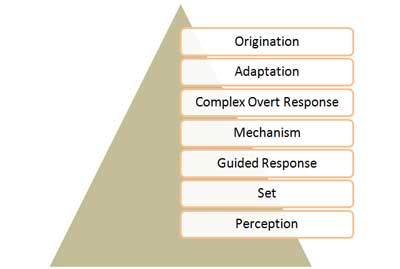Educational Theories as they Apply to Drama and Dance
Throughout this class, we explored several pedagogical theories and how they apply to dance, or how they can be expressed and applied in drama and dance.
In practice, drama and dance provide a wonderful mode of learning curriculum content from other areas. For example, dance can be used to explore word development through the mode of musical, kinaesthetic, and interpersonal intelligences. Or, similarly, drama can be used to deepen a student's understanding of science through the mode of kinaesthetic, interpersonal, and spatial intelligences. Gardner's theory is that people need to use multiple modes of learning, and dance and drama provide the perfect opportunity.
In my personal practice, I had students demonstrate the particle theory of matter through drama, and the movement and creativity allowed them to further understand the topic, and they were more engaged than simply discussion or visuals.
Gardner's Theory of Multiple Intelligences
Gardner's theory was developed in 1983 and proposes that intelligence is not just one ability, but rather a combination of 'modalities.' He also apposes distinguishing someone as having only one modality (for example, no one is only a musical learner), but rather that we possess all modalities and should explore learning through each to gain greater understanding.
The diagram below from GrandSlam demonstrates the 8 modalities of Gardner's theory.
 |
| GrandSlam (2015). Multiple Intelligence Theory: Is it Real? |
In practice, drama and dance provide a wonderful mode of learning curriculum content from other areas. For example, dance can be used to explore word development through the mode of musical, kinaesthetic, and interpersonal intelligences. Or, similarly, drama can be used to deepen a student's understanding of science through the mode of kinaesthetic, interpersonal, and spatial intelligences. Gardner's theory is that people need to use multiple modes of learning, and dance and drama provide the perfect opportunity.
In my personal practice, I had students demonstrate the particle theory of matter through drama, and the movement and creativity allowed them to further understand the topic, and they were more engaged than simply discussion or visuals.
Bloom's Taxonomy
Bloom's Taxonomy in education is a set of three hierarchies (cognitive, affective, psychomotor) that increase in complexity and application as one travels from the bottom to the top.
Below, is the cognitive hierarchy. The bottom of the pyramid represents a simplistic understanding of a topic and the top is a highly complex knowledge and understanding of a topic. For example, in order to synthesize or evaluate, one needs to thoroughly internalize information in order to examine from multiple perspectives, defend, communicate to others, etc.
As described, the highest levels of the hierarchy represent creating new movement patterns to solve problems, or adapting to new stimuli/changes. The solving problems and adapting piece are similar to the Creative Process and would tie in effectively to a dance/drama class. This would be an excellent frame to build your long-range plan around in order to develop confidence and proficiency in students.
Below, is the cognitive hierarchy. The bottom of the pyramid represents a simplistic understanding of a topic and the top is a highly complex knowledge and understanding of a topic. For example, in order to synthesize or evaluate, one needs to thoroughly internalize information in order to examine from multiple perspectives, defend, communicate to others, etc.
 |
| Successful Teaching (2011). Bloom’s Taxonomy: Encouraging Higher Cognitive Thinking in Primary School Classrooms. |
While this hierarchy is effective in all forms of education, the one that especially applies to drama and dance is the psychomotor domain. As demonstrated below, the psychomotor domain (as developed by Simpson) involves behaviour and movement, including manipulation of objects and space. This hierarchy applies mostly to habits and skills which can be taught and developed through drama and dance.
 |
| Big Dog's and Little Dog's Performance Juxtaposition (2015). Bloom's Taxonomy: The Psychomotor Domain. |
As described, the highest levels of the hierarchy represent creating new movement patterns to solve problems, or adapting to new stimuli/changes. The solving problems and adapting piece are similar to the Creative Process and would tie in effectively to a dance/drama class. This would be an excellent frame to build your long-range plan around in order to develop confidence and proficiency in students.


Comments
Post a Comment